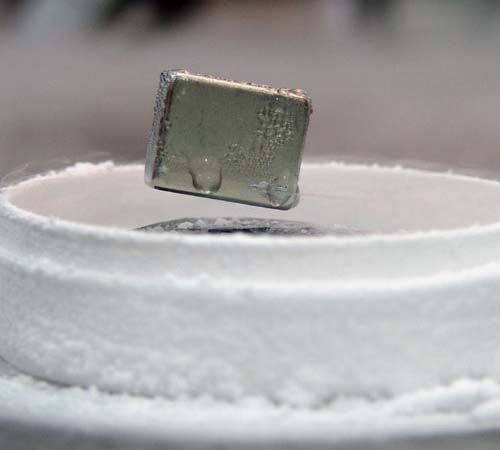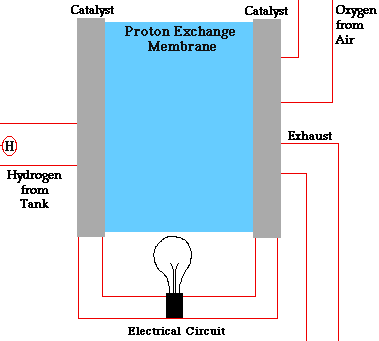Superconductor
A superconductor is a material that can conduct electricity or transport electrons from one atom to another with no resistance. This means no heat, sound or any other form of energy would be released from the material when it has reached “critical temperature” (Tc), or the temperature at which the material becomes superconductive. Unfortunately, most materials must be in an extremely low energy state (very cold) in order to become superconductive. Research is underway to develop compounds that become superconductive at higher temperatures. Currently, an excessive amount of energy must be used in the cooling process making superconductors inefficient and uneconomical.
Superconductivity is a phenomenon of exactly zero electrical resistance and expulsion of magnetic fields occurring in certain materials when cooled below a characteristic critical temperature.It was discovered by Heike Kamerlingh Onnes in Leiden. Like ferromagnetism and atomic spectral lines, superconductivity is a quantum mechanical phenomenon. It is characterized by the Meissner effect, the complete ejection of magnetic field lines from the interior of the superconductor as it transitions into the superconducting state. The occurrence of the Meissner effect indicates that superconductivity cannot be understood simply as the idealization of perfect conductivity in classical physics.
You might also like
| Superconductors What is Superconductor ? A superconductor... | Timeline of materials technology Timeline of materials technology BC 29,000–25,000... | Transport Phenomena What is Transport Phenomena ? In engineering... | Hydrogen Fuel Cell Hydrogen Vehicle A fuel cell is a device... |




 Alloy Suppliers
Alloy Suppliers
 Aluminum
Aluminum
 Aluminum Extrusions
Aluminum Extrusions
 Copper-Brass-Bronze
Copper-Brass-Bronze
 Nickel
Nickel
 Magnets
Magnets
 Stainless Steel
Stainless Steel
 Stainless Steel Tubing
Stainless Steel Tubing
 Steel Service Centers
Steel Service Centers
 Titanium
Titanium
 Tungsten
Tungsten
 Wire Rope
Wire Rope